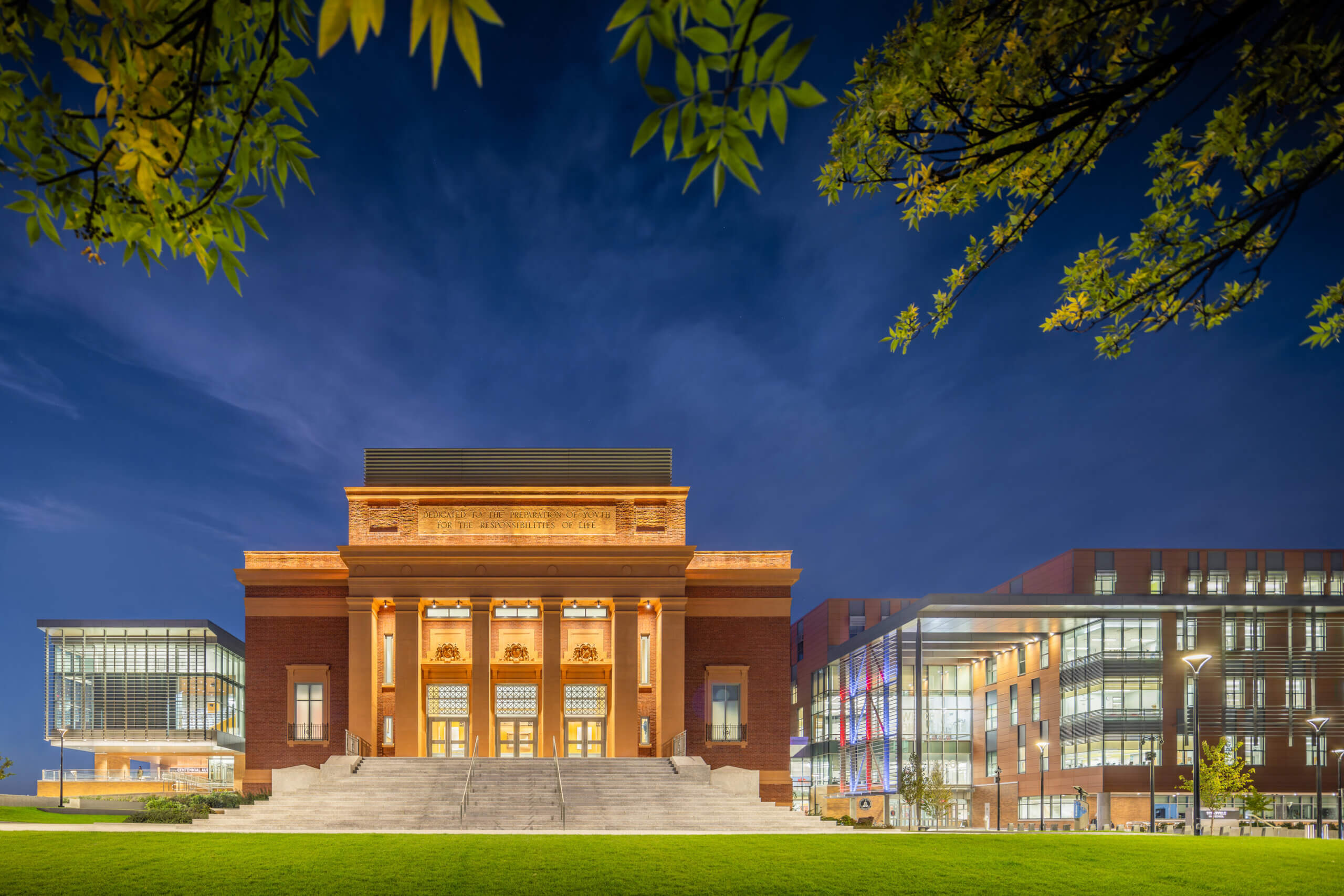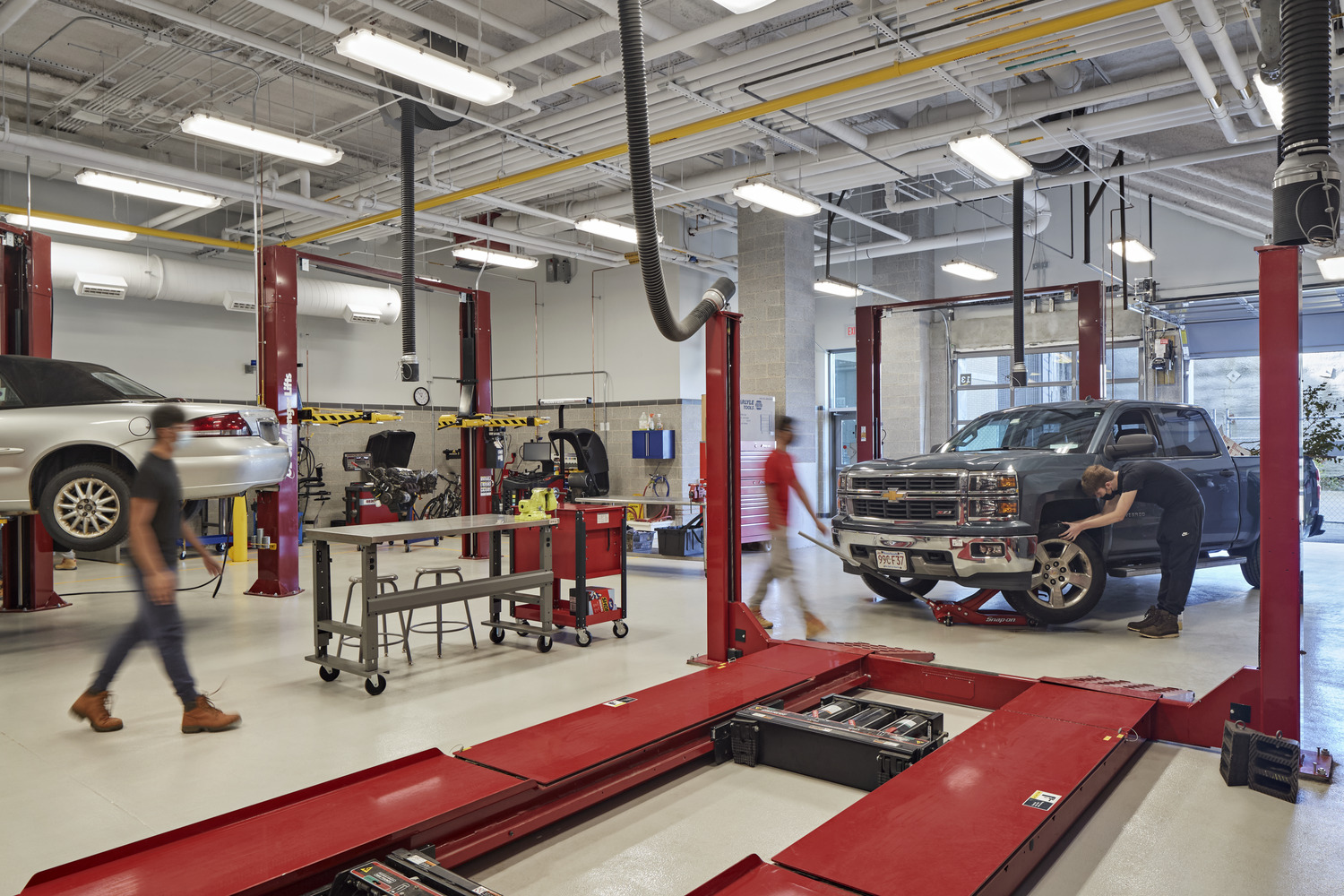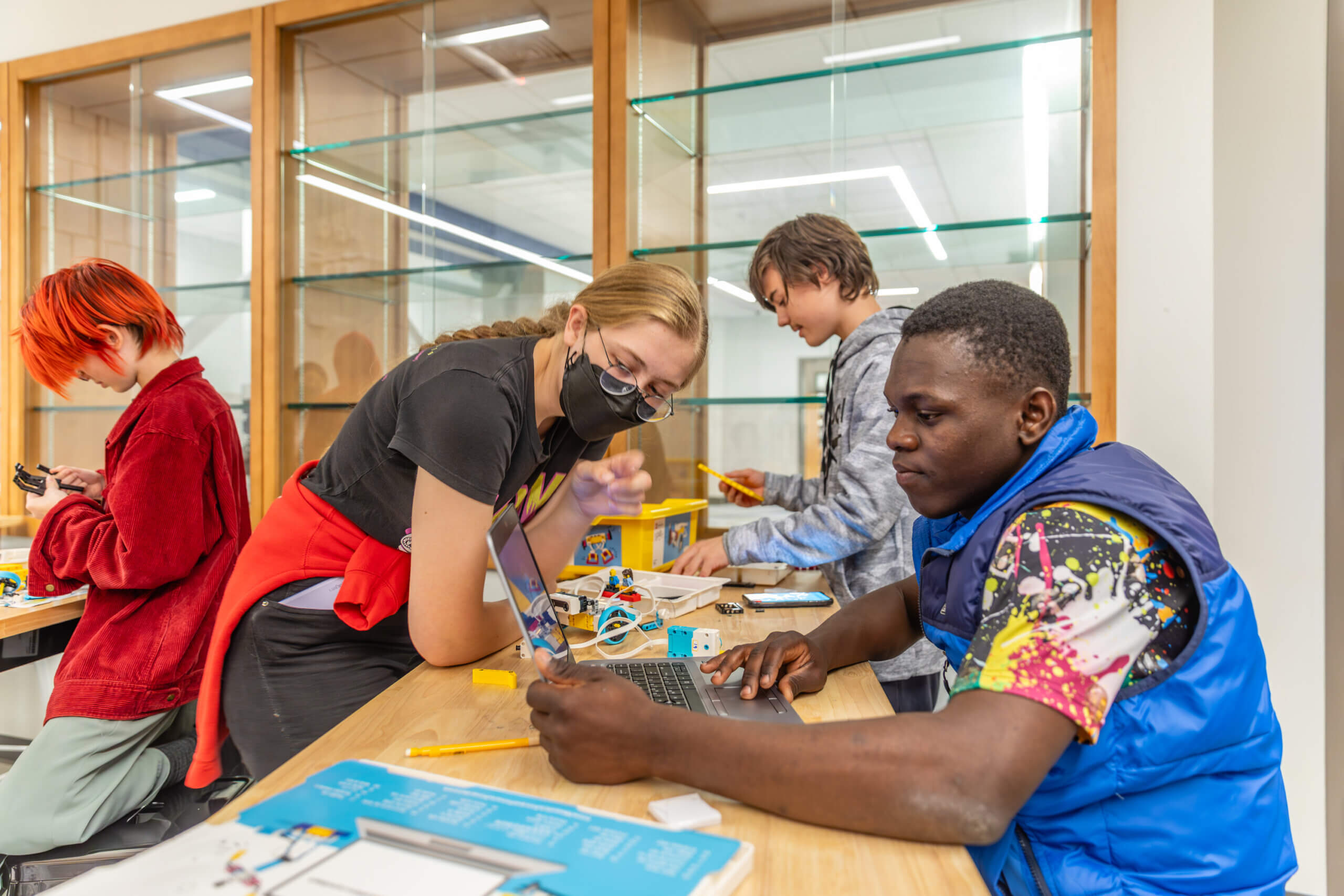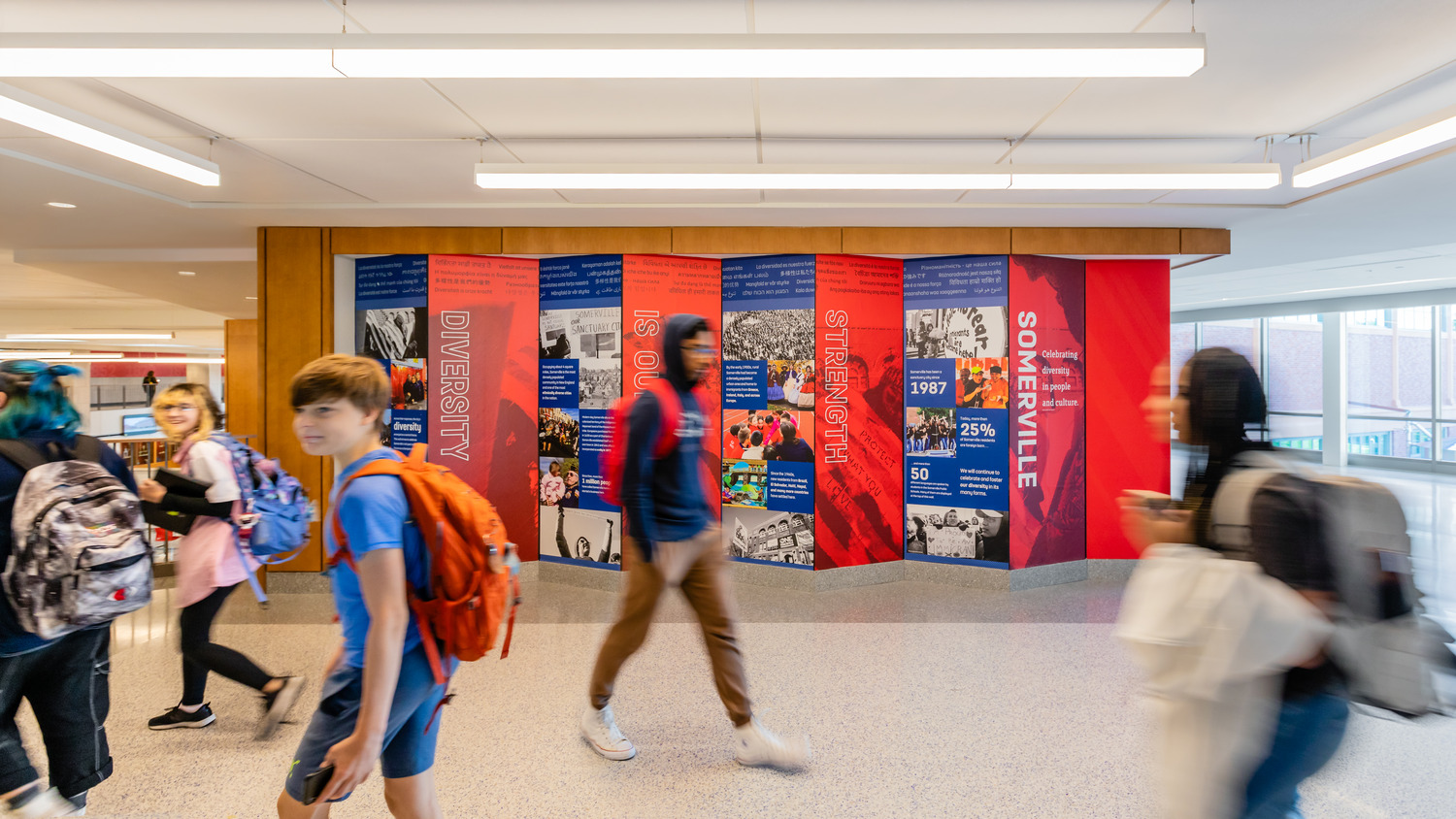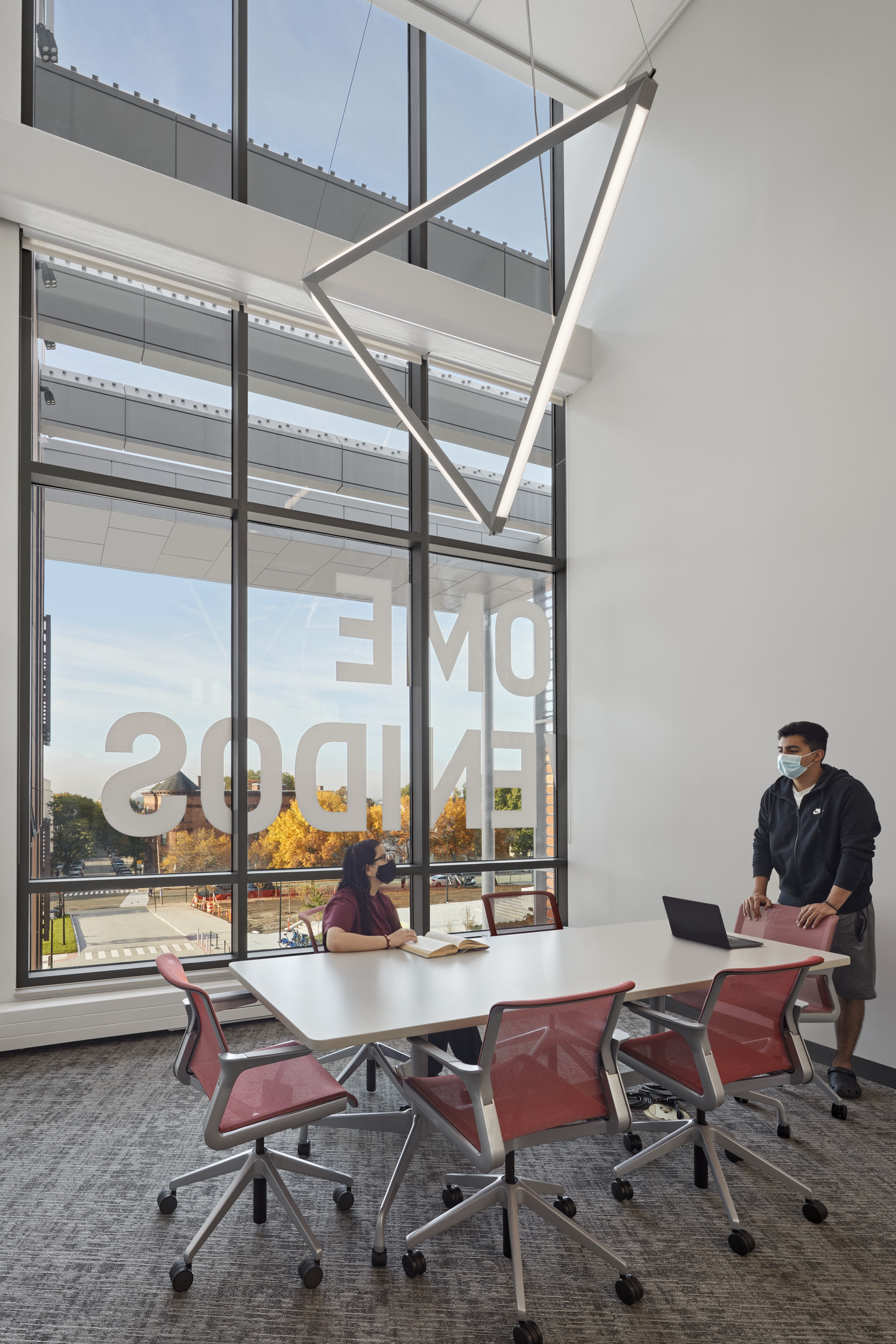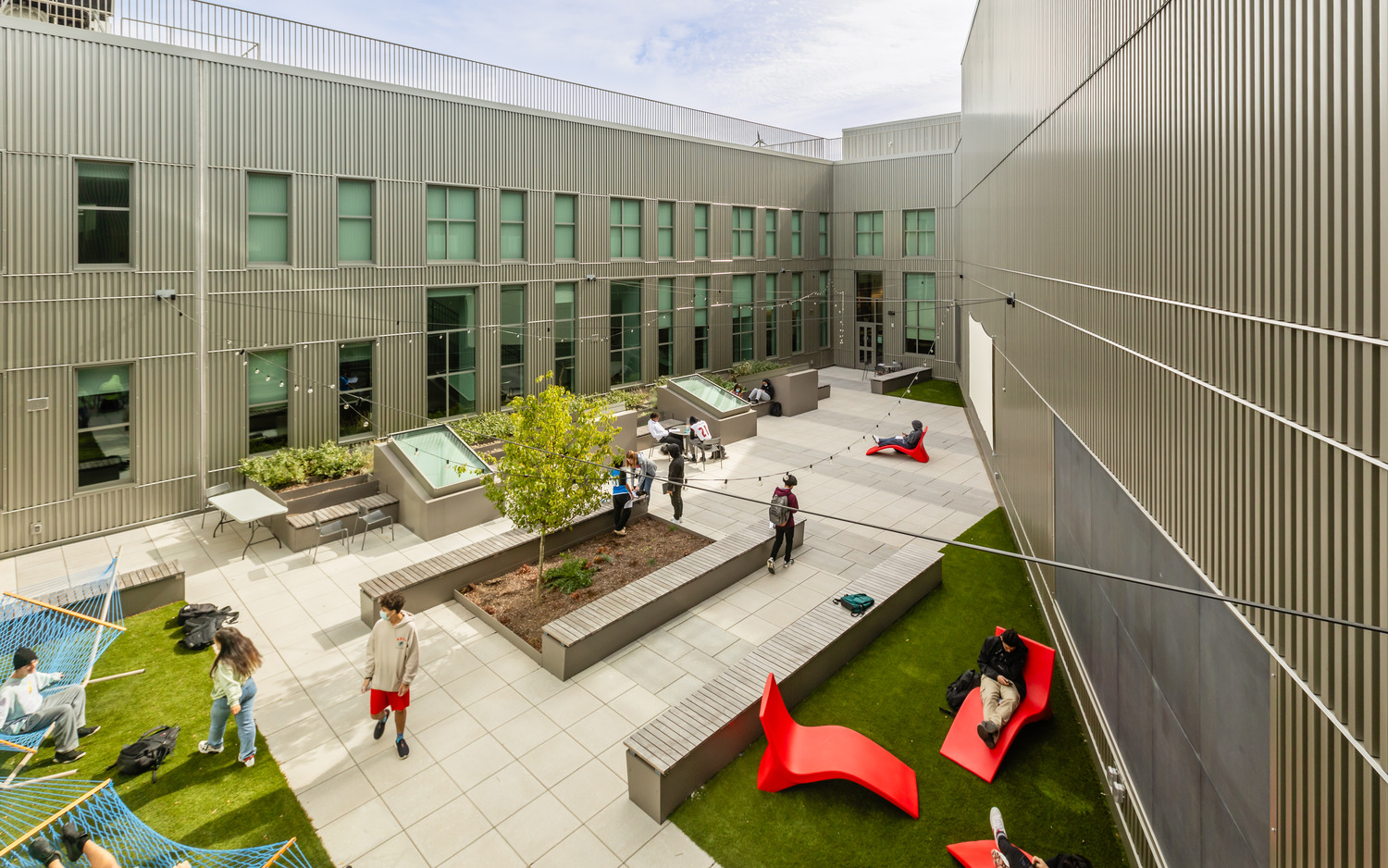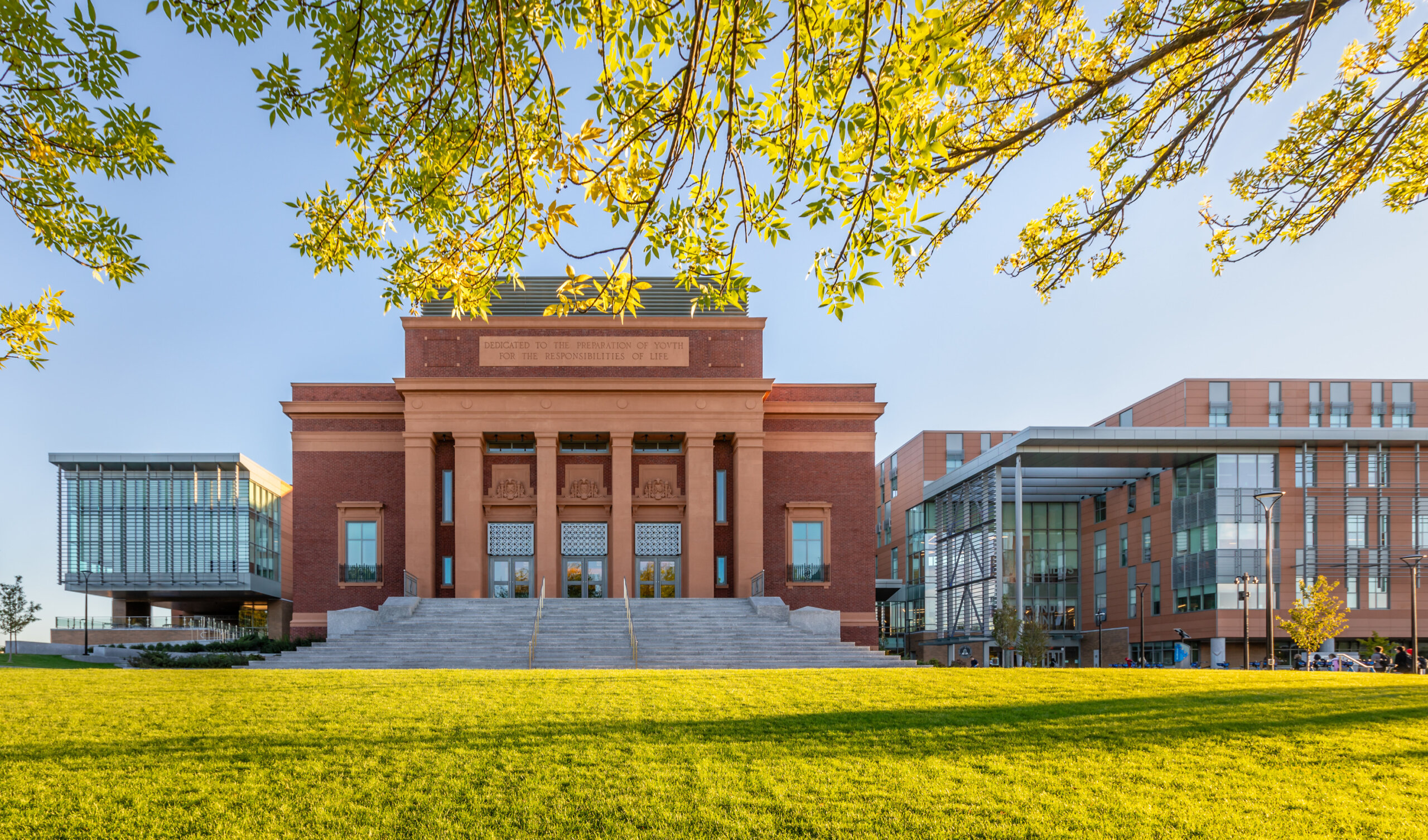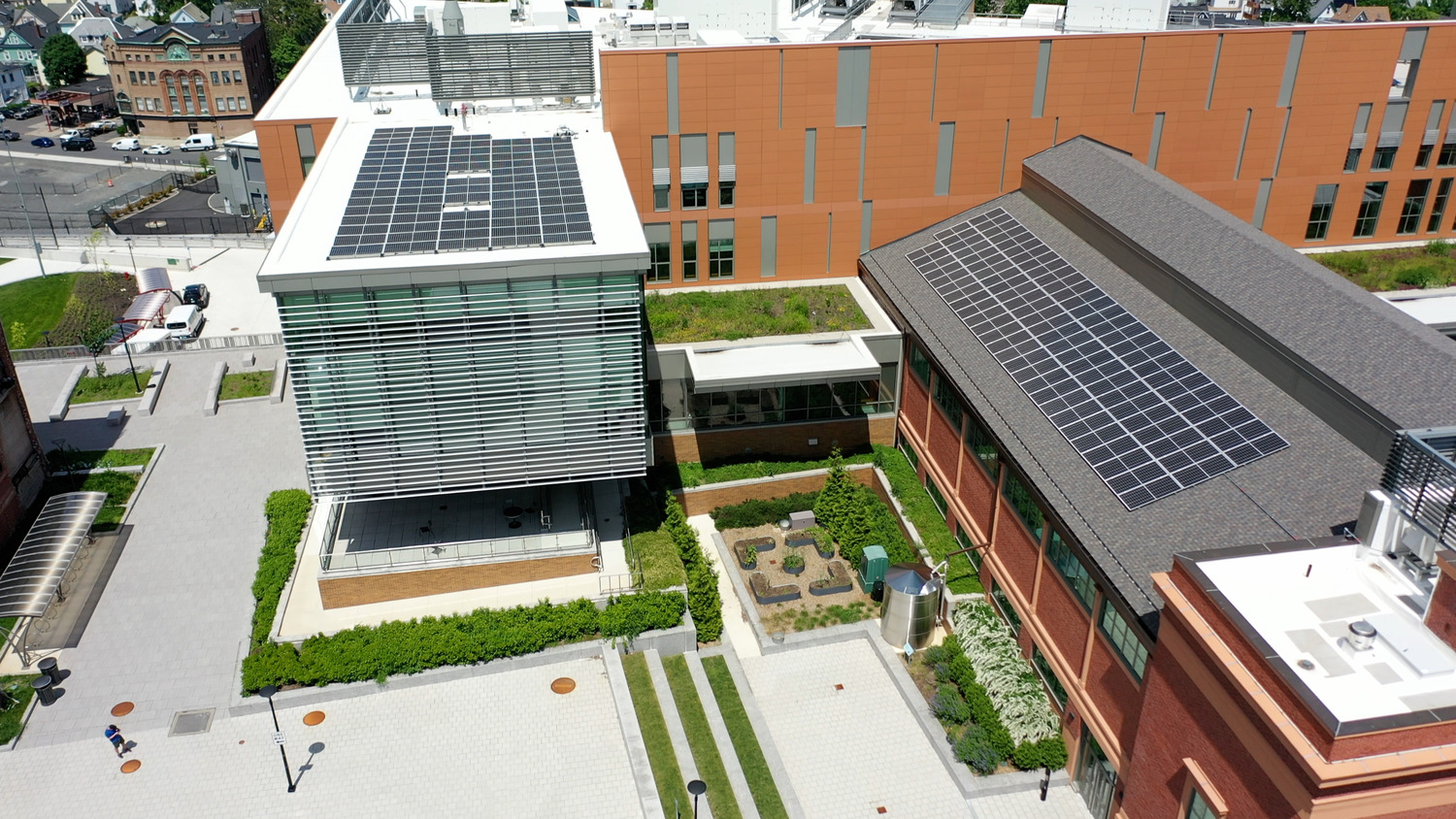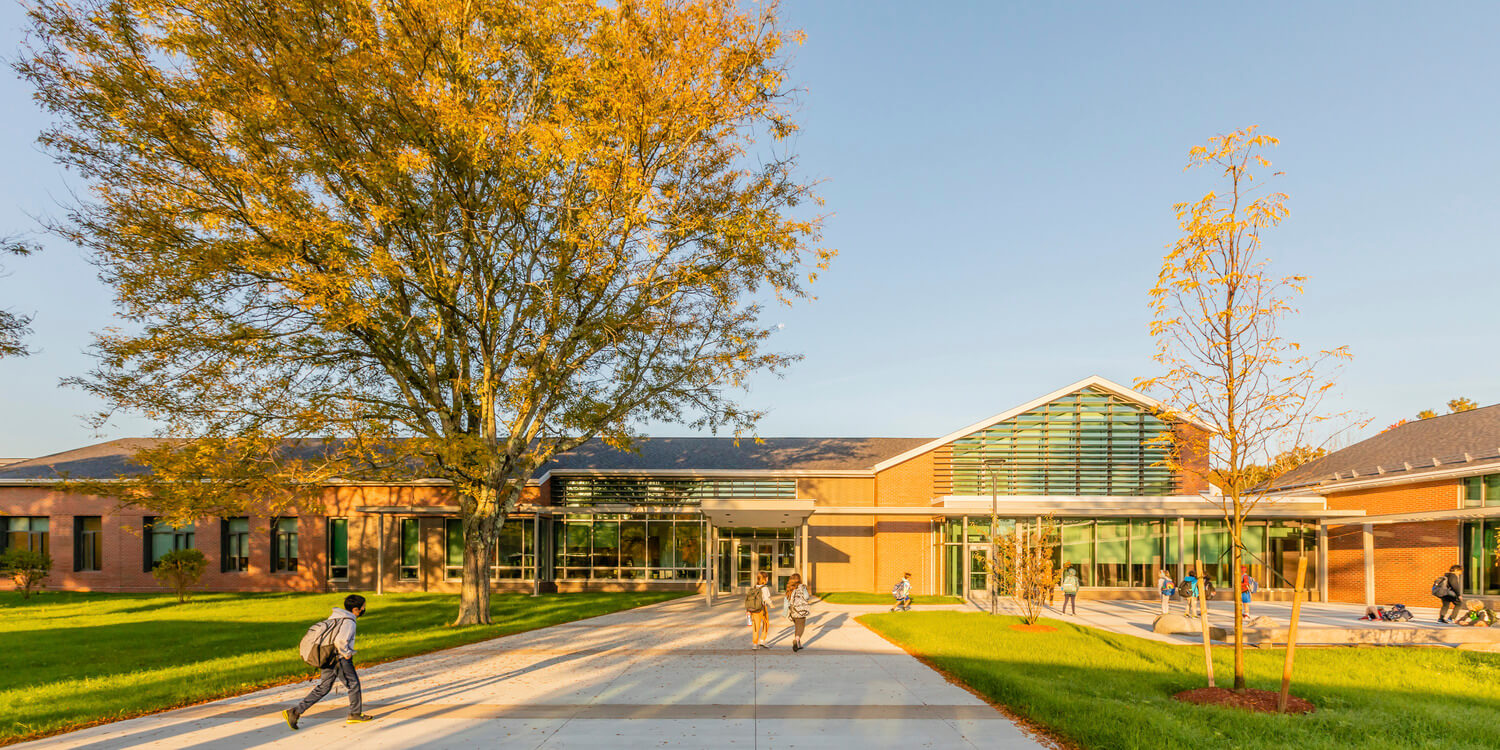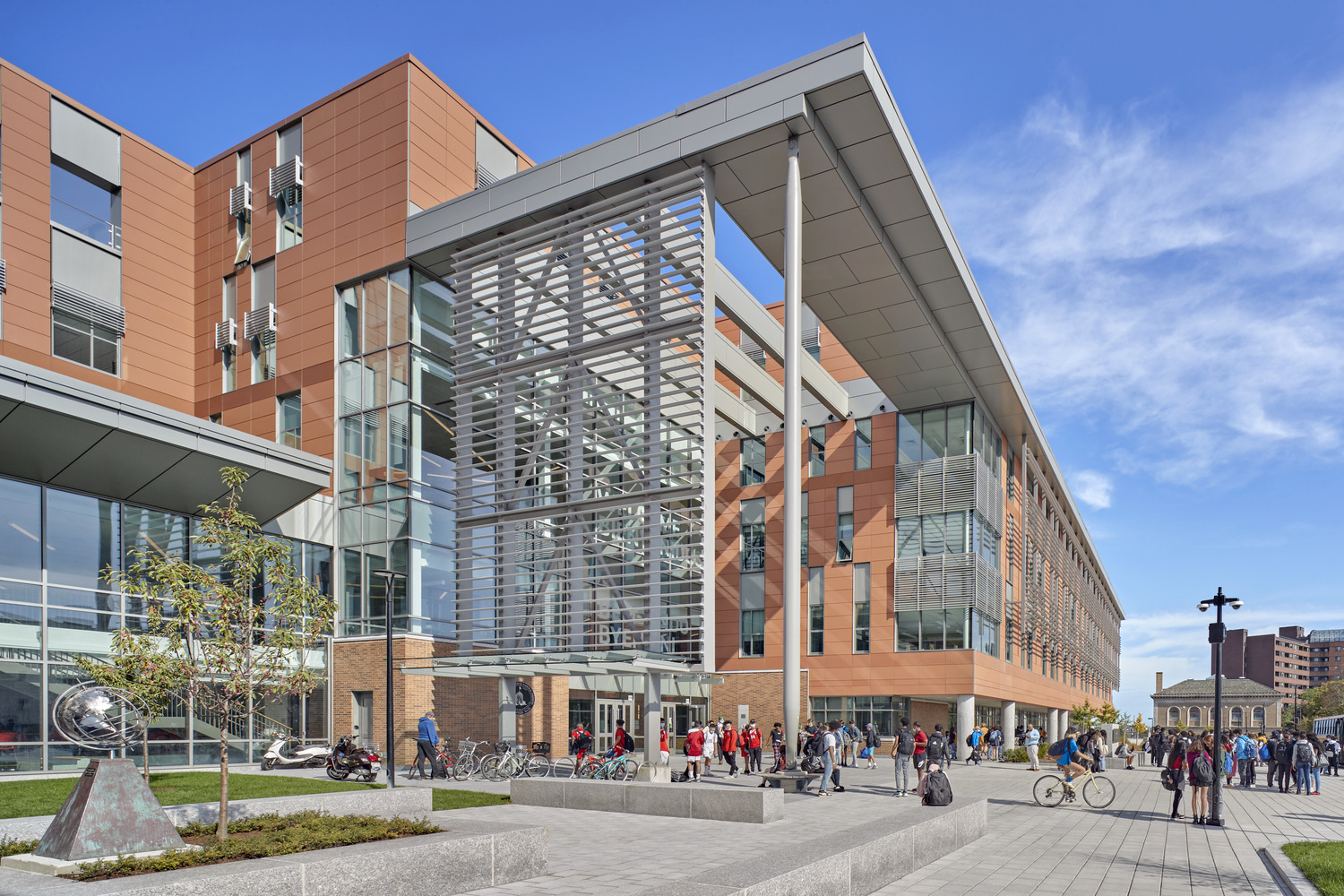


SMMA master planned the school’s historic Central Hill campus—the civic, educational, and cultural heart of Somerville.
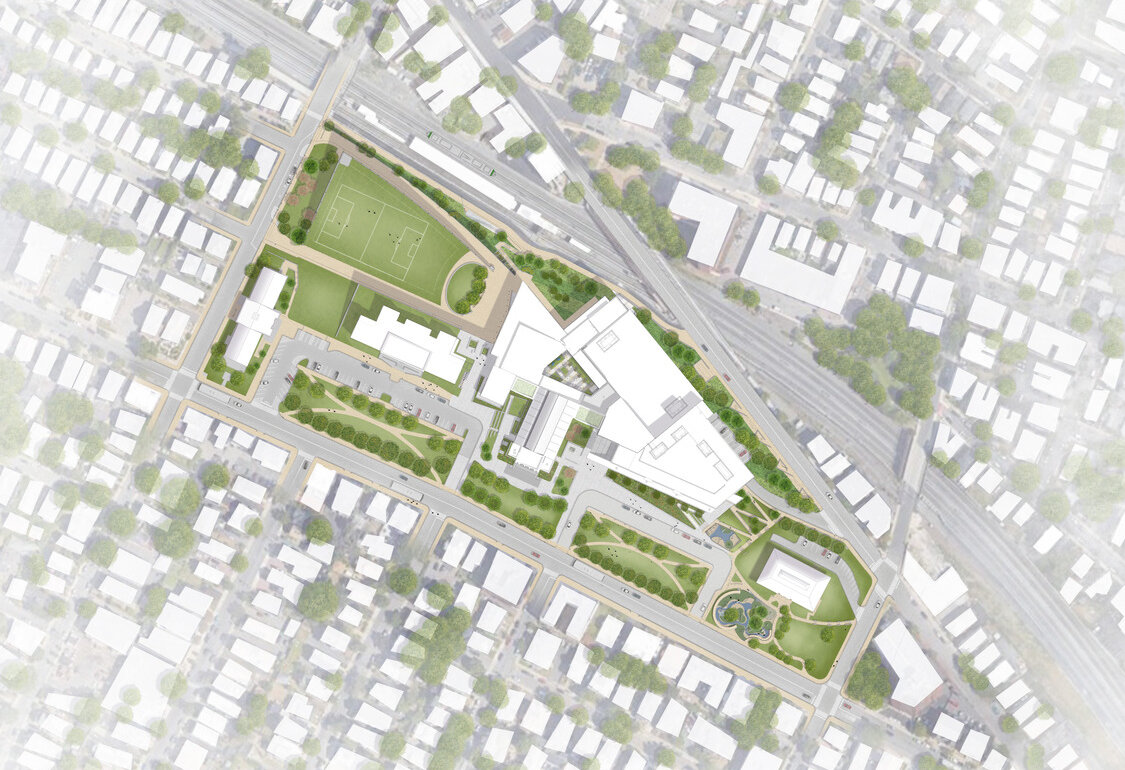
City Hall (far left) forms part of the school’s “civic concourse”. The main branch public library (far right) completes the “educational concourse”.
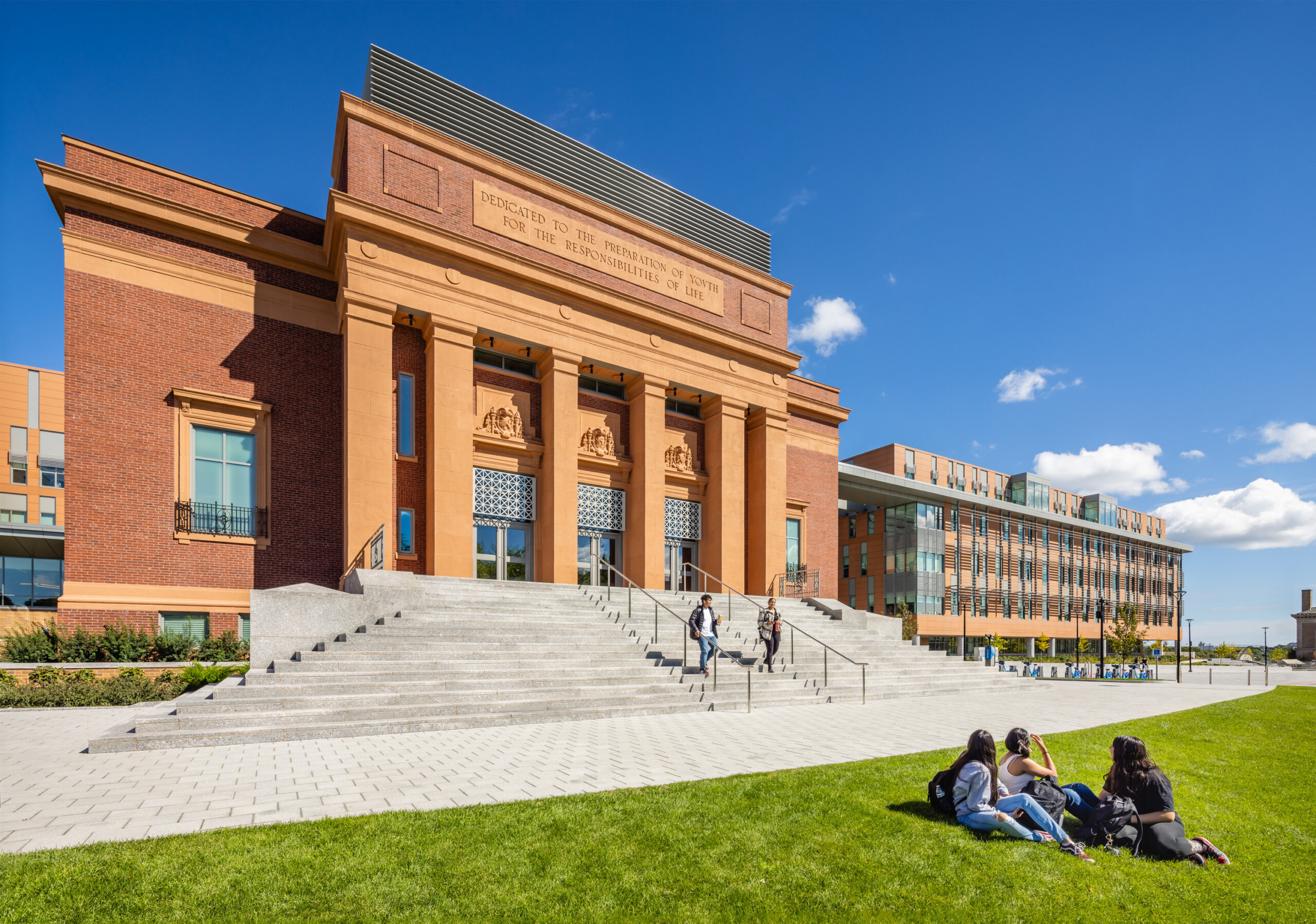
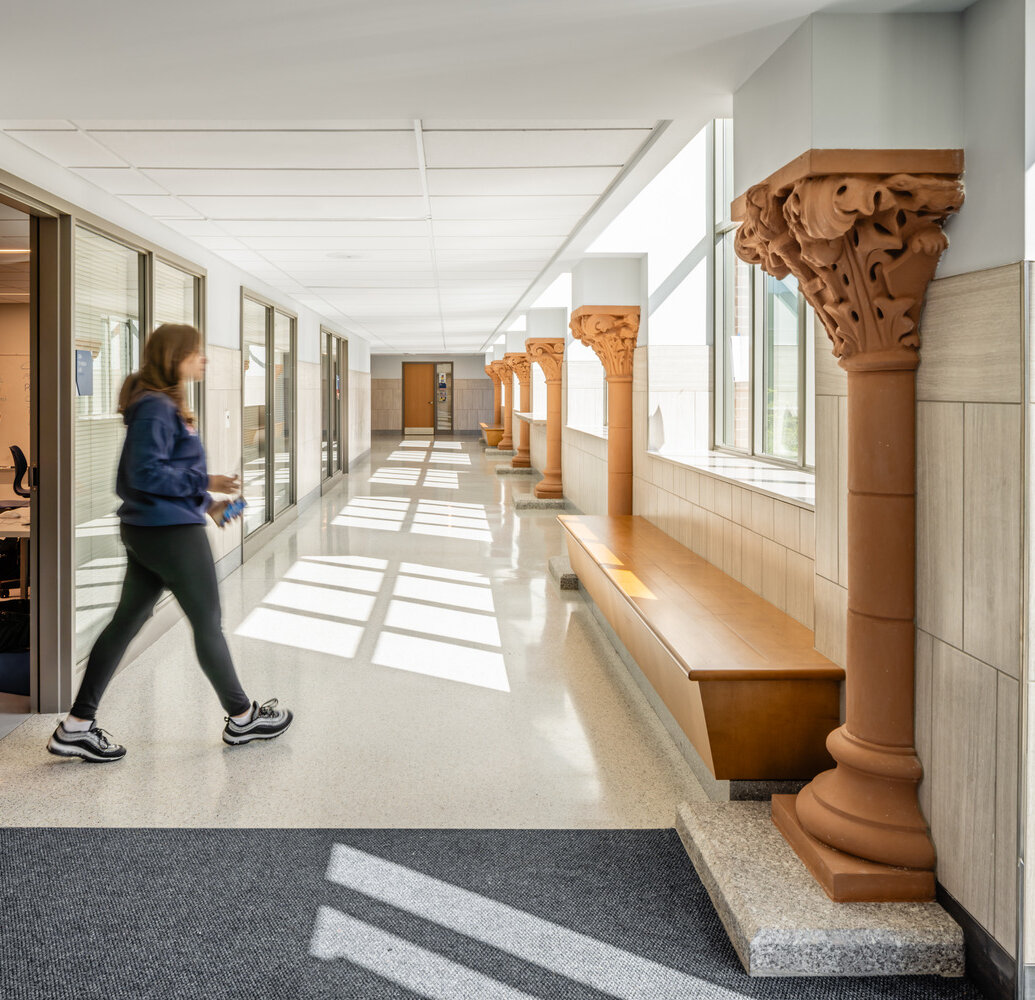
The master plan preserves historic buildings as far back as the 19th century, interweaving these old structures into new construction.
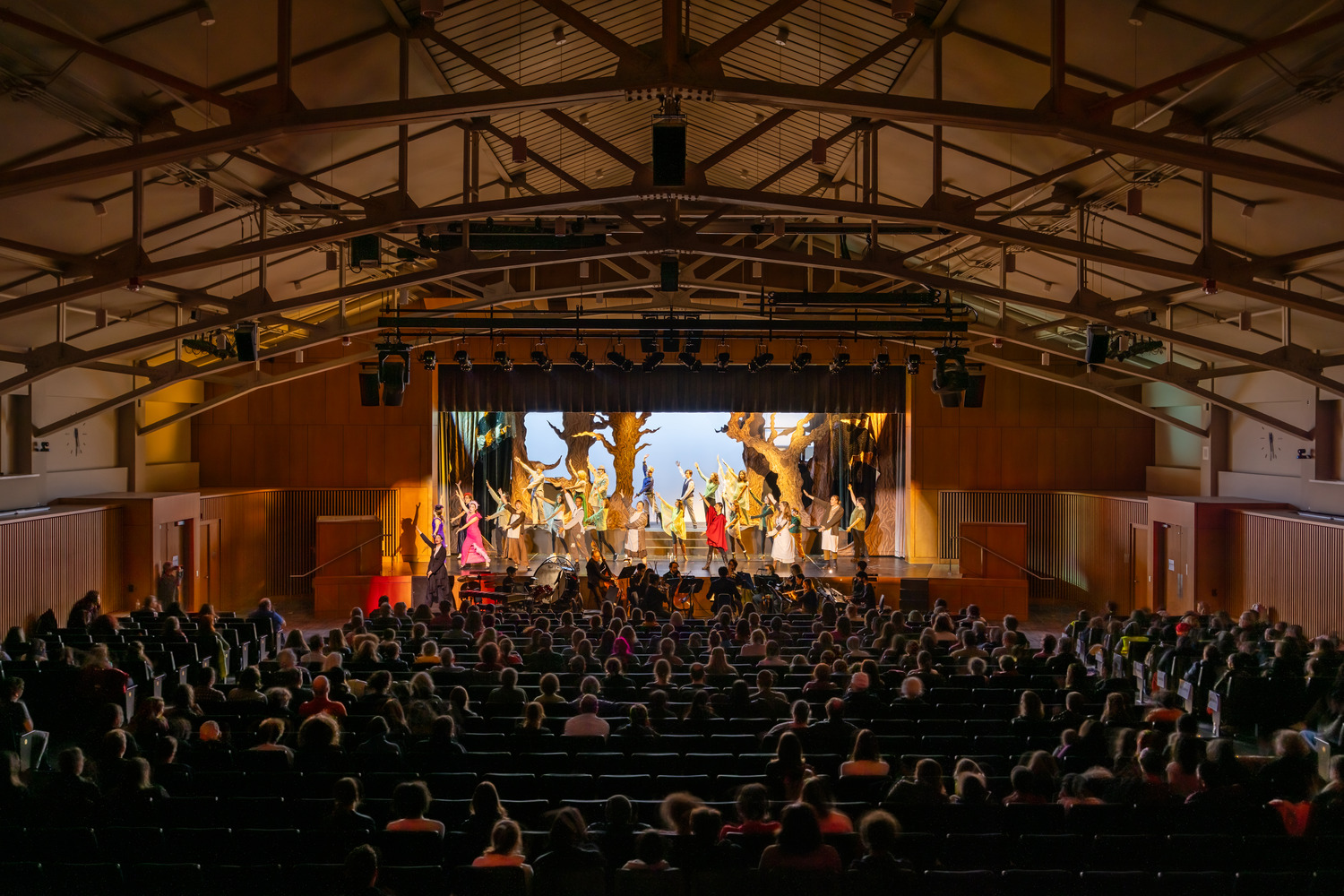
The 1929-era gymnasium-turned-auditorium hosts public events for 750 spectators.

The lecture hall hosts after-hours city council and community meetings.
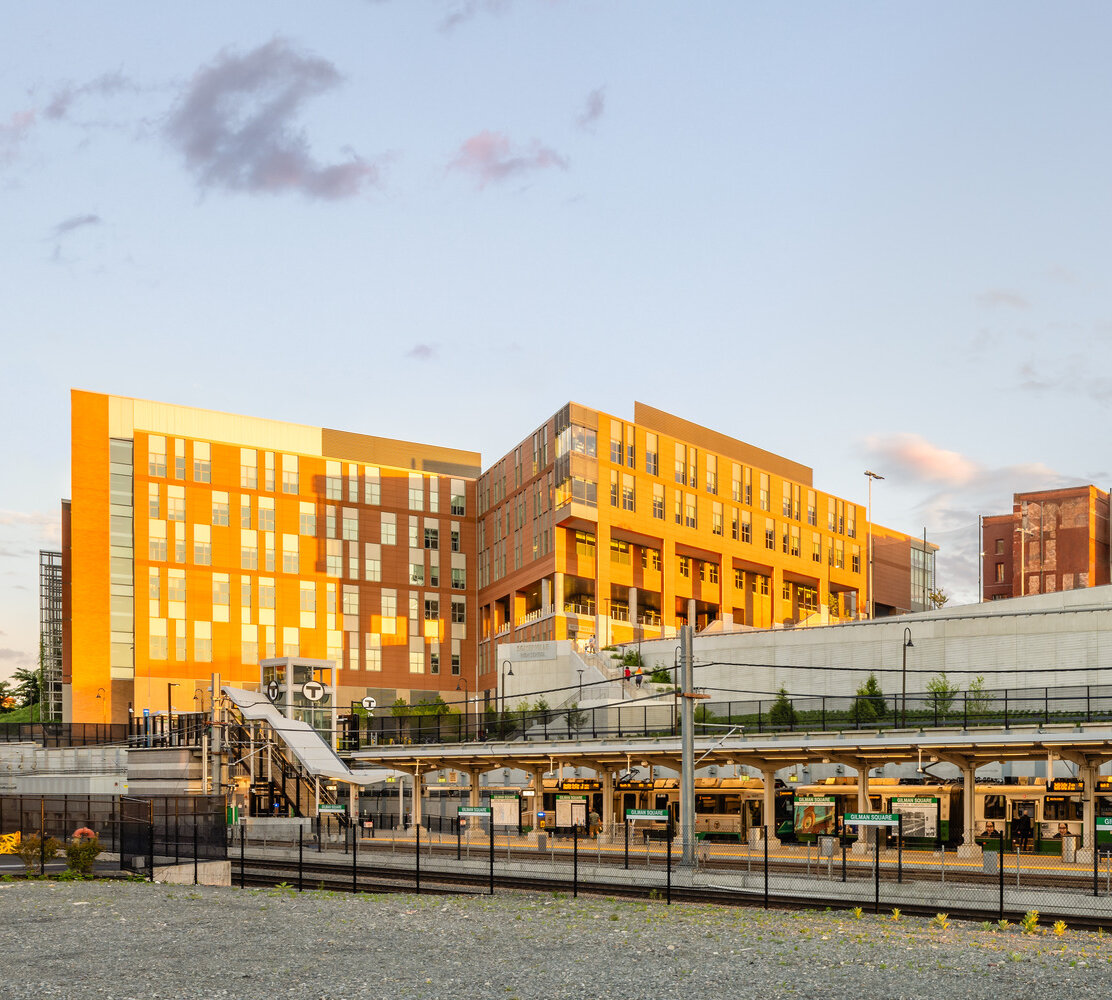
By connecting to the new MBTA Green Line station and a cross-town bike and pedestrian path, the design encourages alternative modes of transportation.
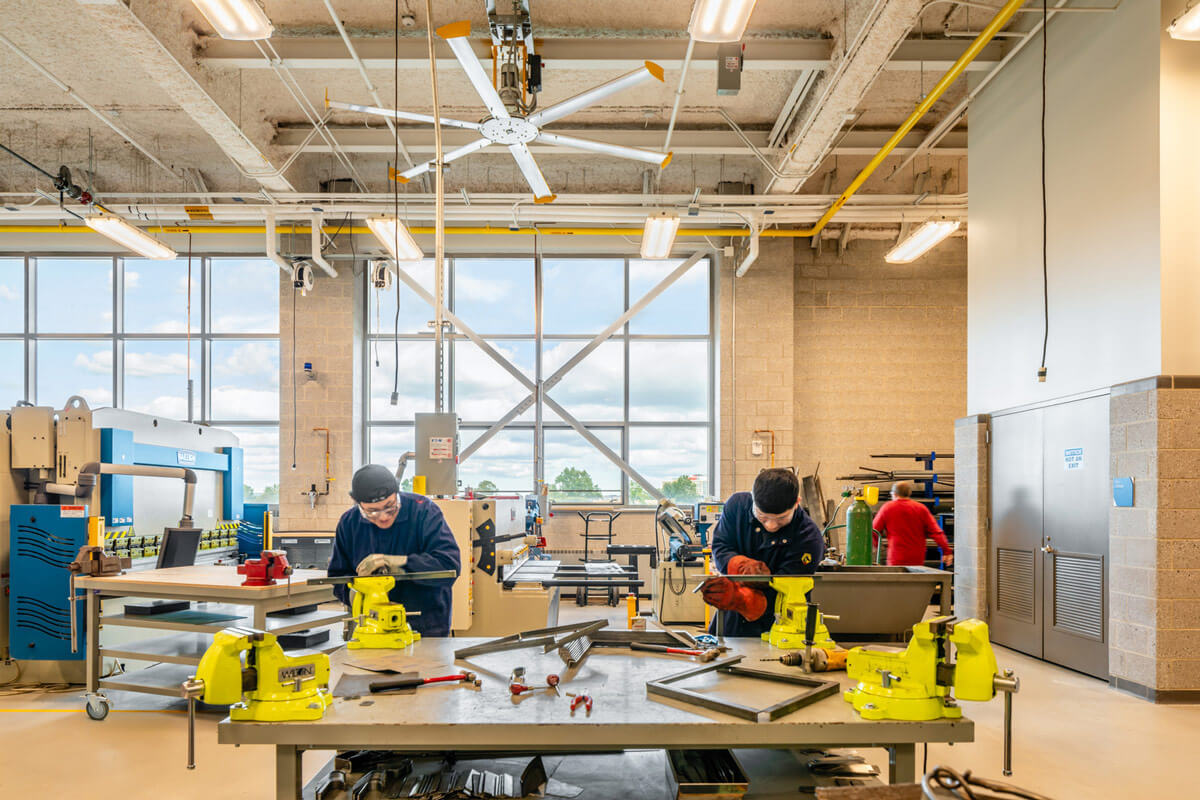
The design weaves together academic, CTE, and community spaces.
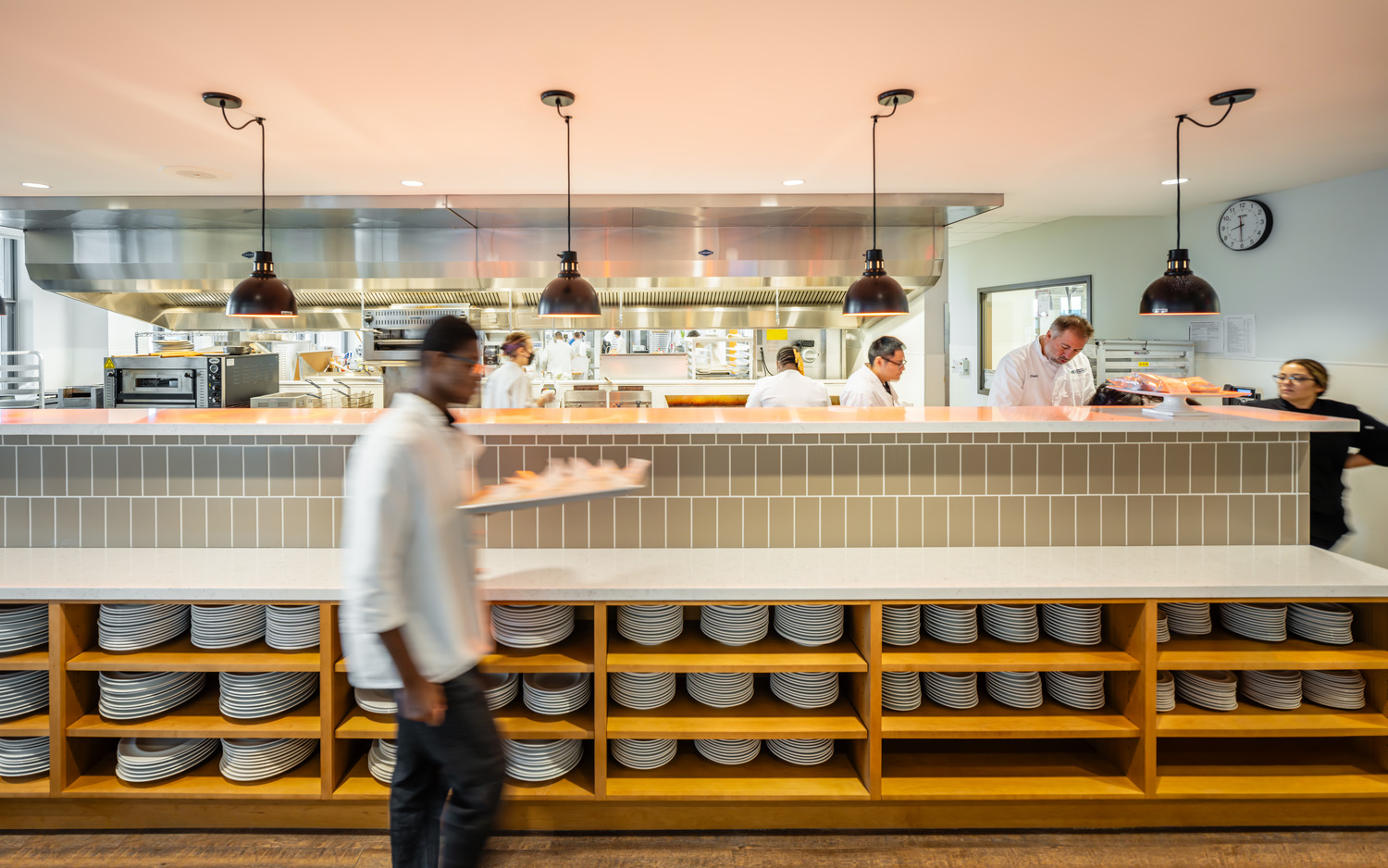
The school fosters interaction between the academic and CTE programs using strategic adjacencies.
Strategic Learning Adjacencies
|The design places elements with natural connections in direct proximity to inform and enrich each other, creating authentic learning opportunities.

An outdoor student vegetable garden supplies the Culinary Arts program with student-tended produce.

Early Education abuts the Somerville Child Care Center and playground, where CTE students assist teachers.

Music spaces including orchestra, band, and choral spaces are placed near the theater, which holds school and public performances.

The Electrical Shop has direct access to outdoor space for testing photovoltaics and renewable energy technologies.
CTE Spaces
Meeting the superintendent’s desire for “a building that serves the public,” several CTE spaces welcome in members of the community as customers.
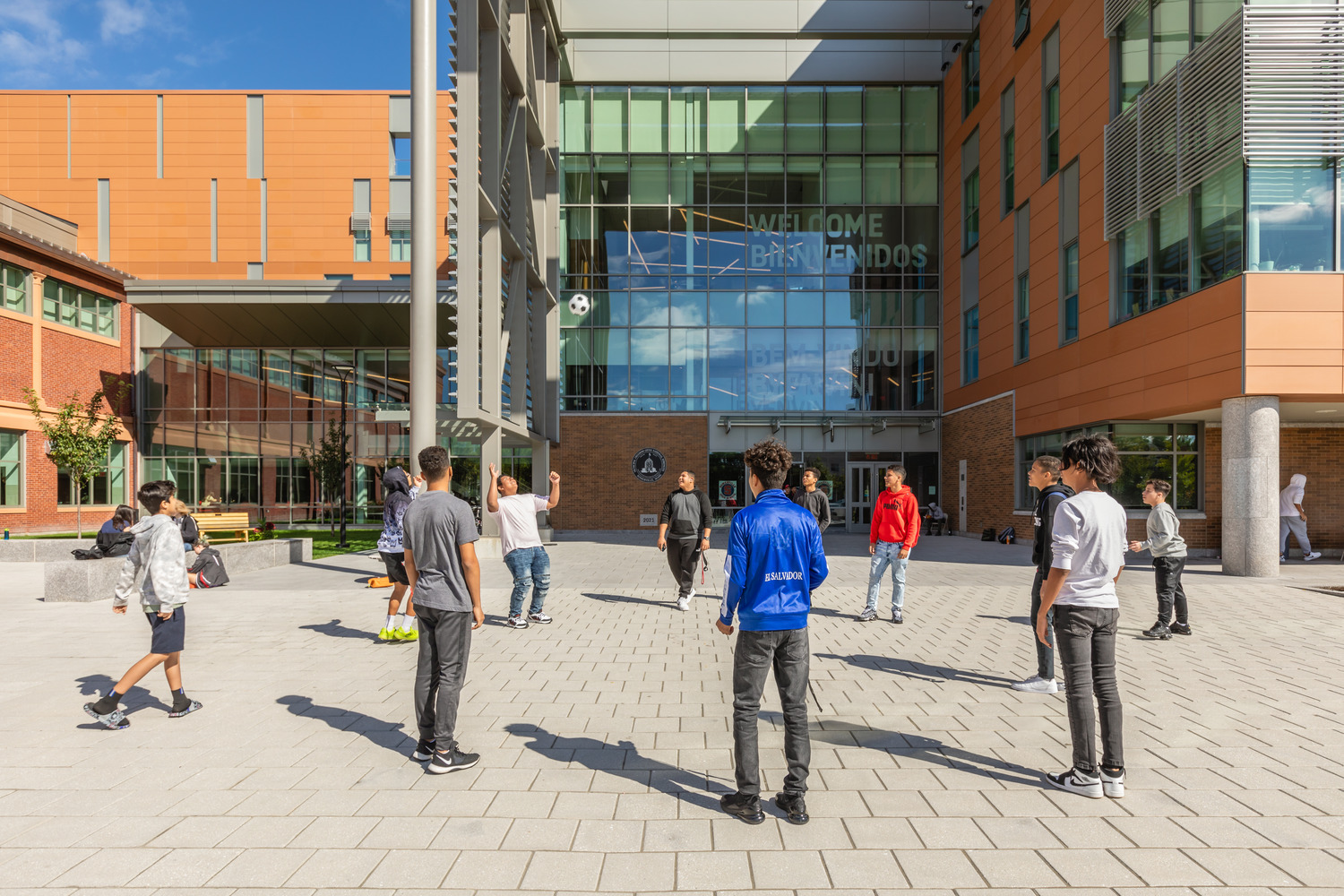
Students, staff, and community members sought a design that reflects their city’s diversity.
Somerville, MA
|Somerville ranks as New England’s most densely populated municipality.

City Hall protest with old Somerville High School in background
Following its incorporation in 1872, the city rapidly urbanized and grew to support a large, working-class population. Somerville’s blue-collar roots and down-to-earth character persist a century and a half later, even as its population has diversified.
Residents include a mix of:
- Tradespeople
- Professionals
- Academics
- Artists
- College students
- Recent immigrants from countries including Haiti, El Salvador, and Brazil
Today nearly 25% of Somerville residents are foreign born and 52 languages are spoken within the city’s 4.12 square miles. This makes Somerville one of the most ethnically diverse cities in the United States.
Environmental Graphics
Drawing on knowledge gained from a student focus group and aggregated survey responses, the design team created more than 4,000 square feet of environmental graphics that relate to themes of diversity and community.

Through surveys and focus groups, one theme quickly emerged: pride in diversity.
Focus groups revealed that students embrace the social and cultural mix of Somerville High School. Furthermore, they welcome all people regardless of nationality, race, gender, primary language, or cultural identity, and laud Somerville’s eclectic array of festivals, locally owned businesses, and ethnic restaurants.
“We function as a community with multiple languages, cuisines, financial statuses, and citizen statuses. We accept those who offer themselves as active community members and add to the city’s unique flavor.”
Patrick Raffery, SHS student
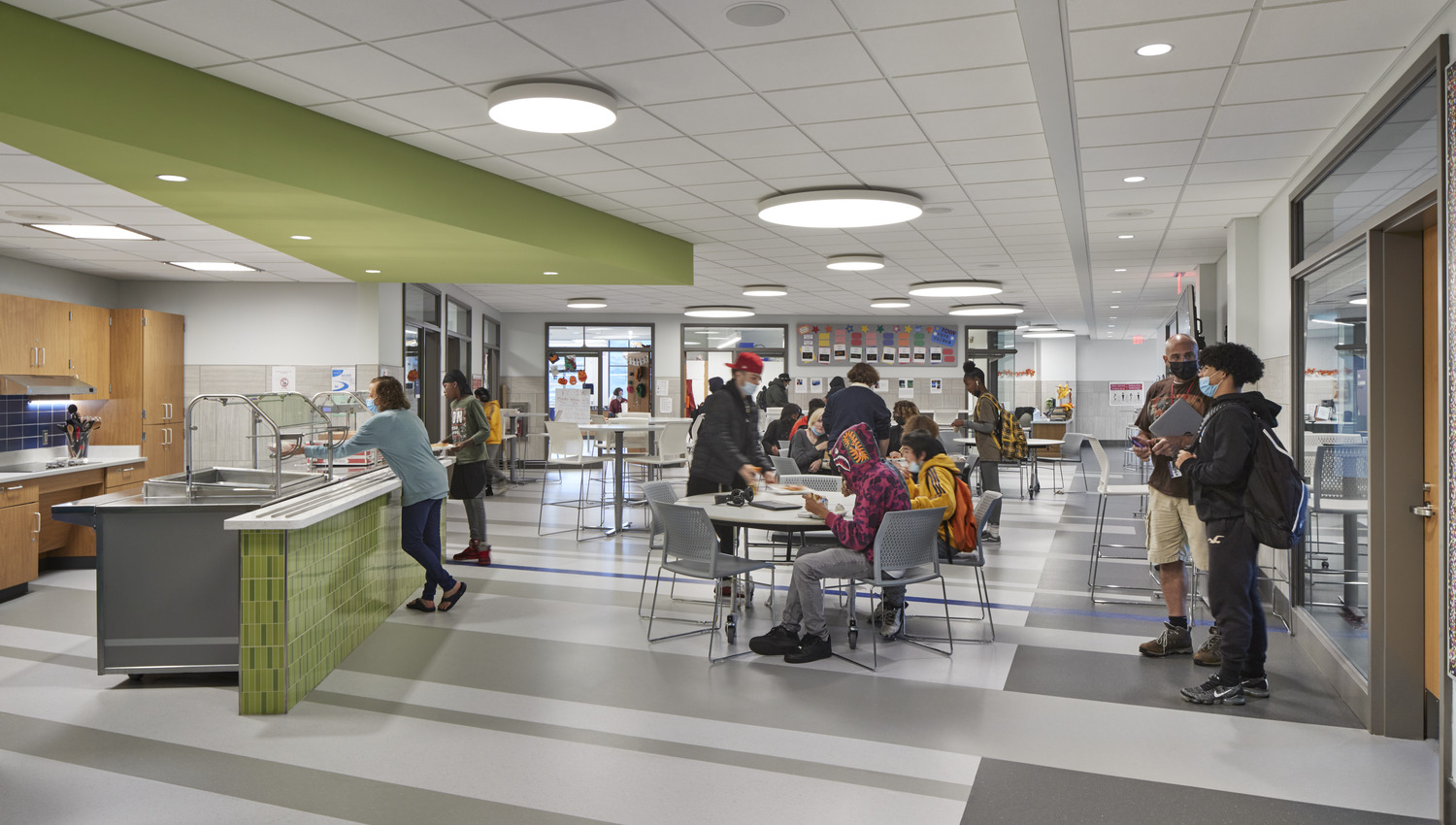
Equity-based programs include Next Wave/Full Circle, a project-based therapeutic learning environment. Previously housed offsite, the program now operates from the new Somerville High School.
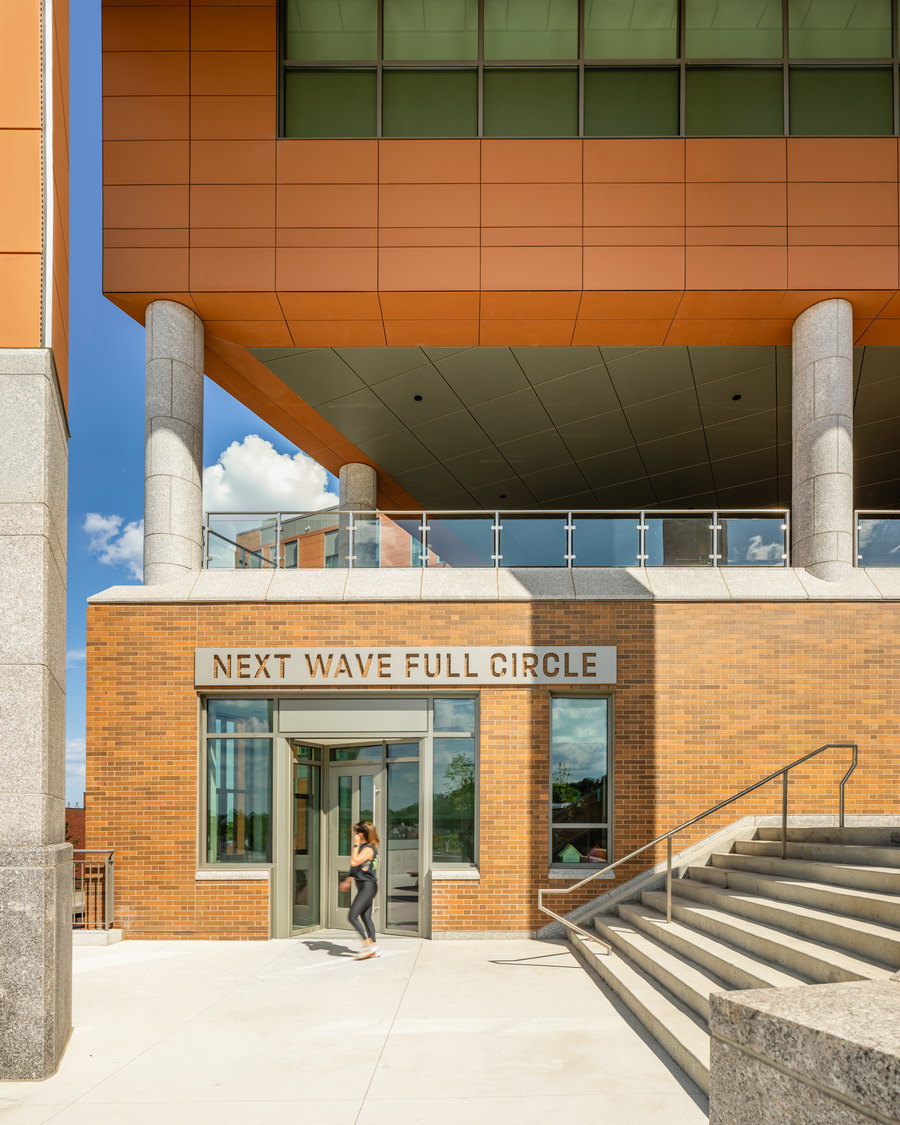
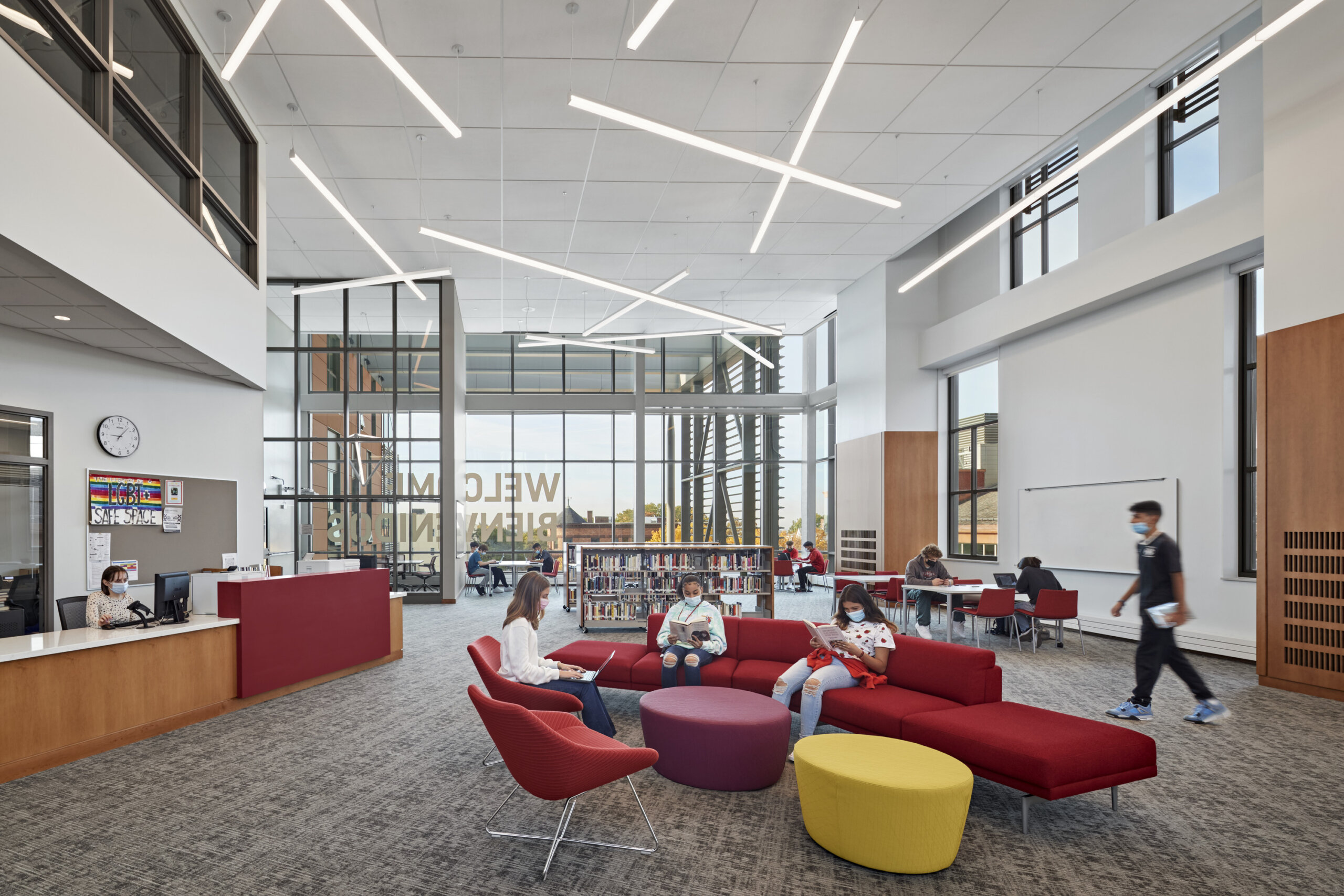
The media center offers technology-rich infrastructure and flexible learning experiences.
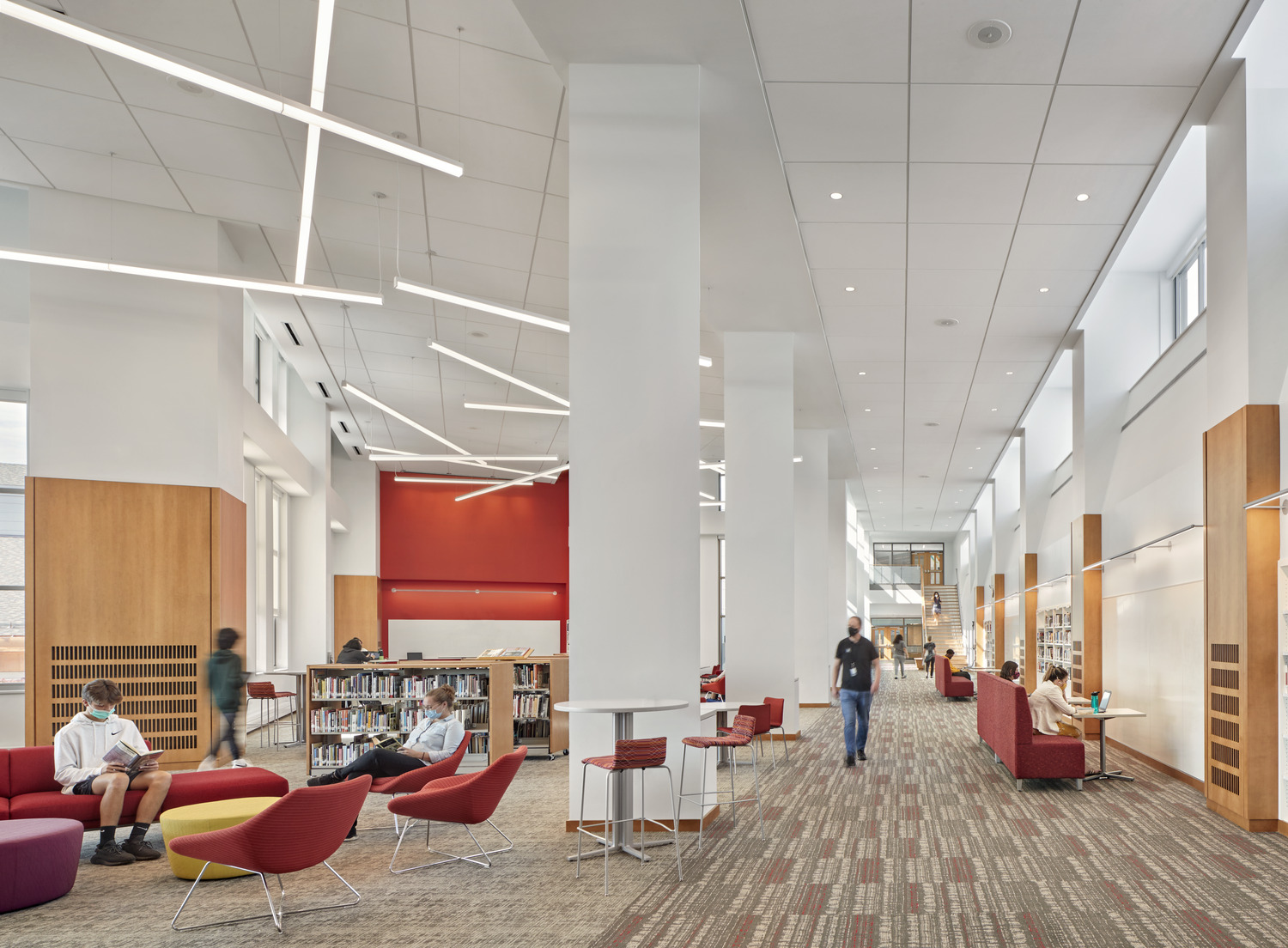
Rather than a fixed destination room, the media center serves as a passageway for all students as they move between classes.
Flexible Spaces: The Media Center
|
Formerly located in a dark, repurposed 1929 gymnasium, the media center forms the heart of the school in plan and section. It connects many of the school’s diverse programs such as the Graphic Design CTE lab overlooking it.
Small group rooms serve students in need of private study or one-to-one instruction. Generous daylighting, a silent displacement-air system, comfortable furniture, and multilingual graphics add to the welcoming, inclusive feel.

A makerspace supports hands-on project work such as 3D printing, robotics, and TV production.
The media center features two classroom areas for technology-driven instruction. Open collaboration areas with whiteboards and soft seating cater to small-scale projects and peer-to-peer learning.

Outside, two green roofs provide authentic connections to the natural environment in New England’s densest city.

The dining commons, a uniquely shaped two-story space, connects all public areas in the school. Its design boasts differentiated zones for individuals and medium-to-large-sized groups.
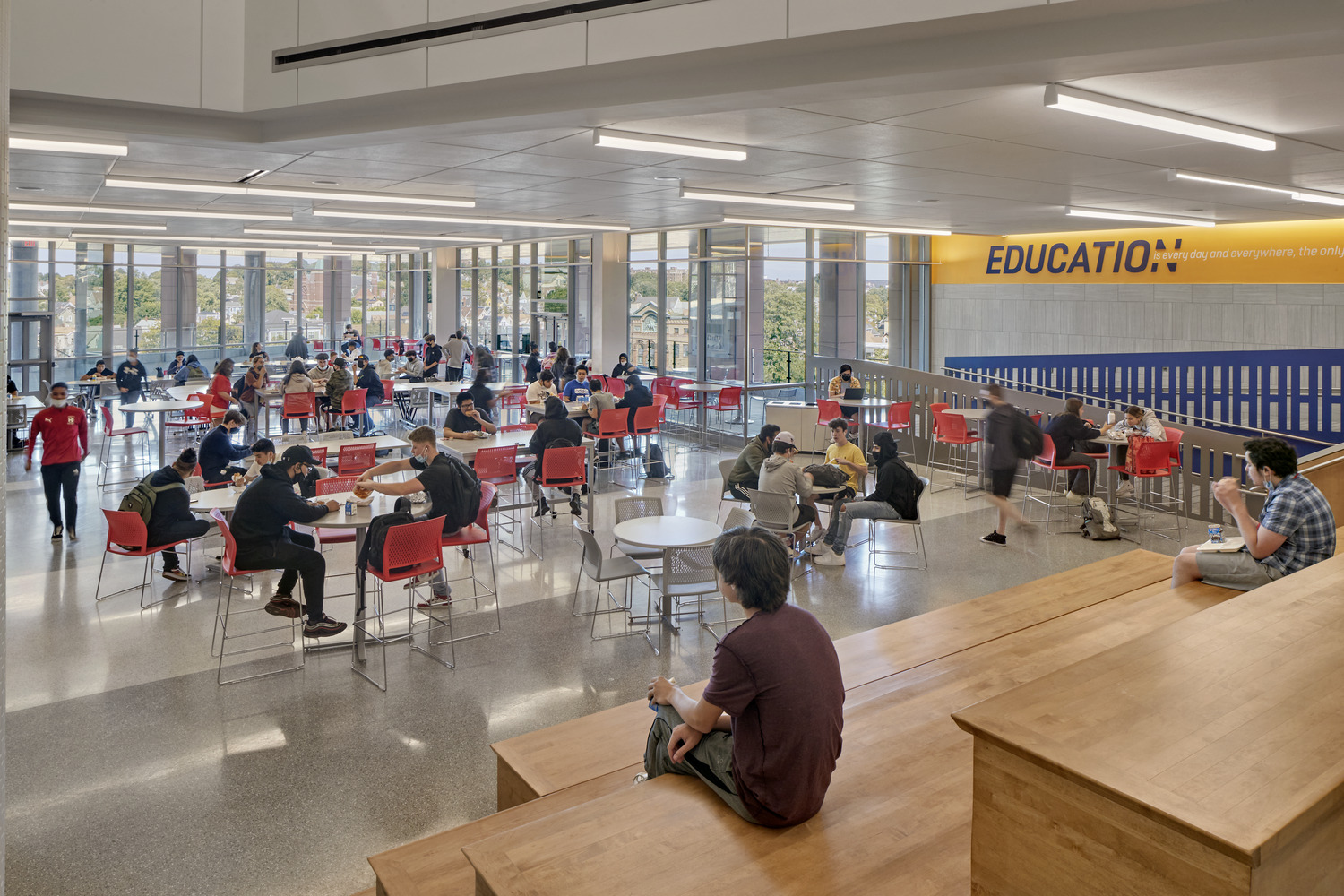
The commons serves many roles: a lobby entrance, gathering space with whiteboards and display technology, passageway, connector to athletic facilities, and an exhibition.
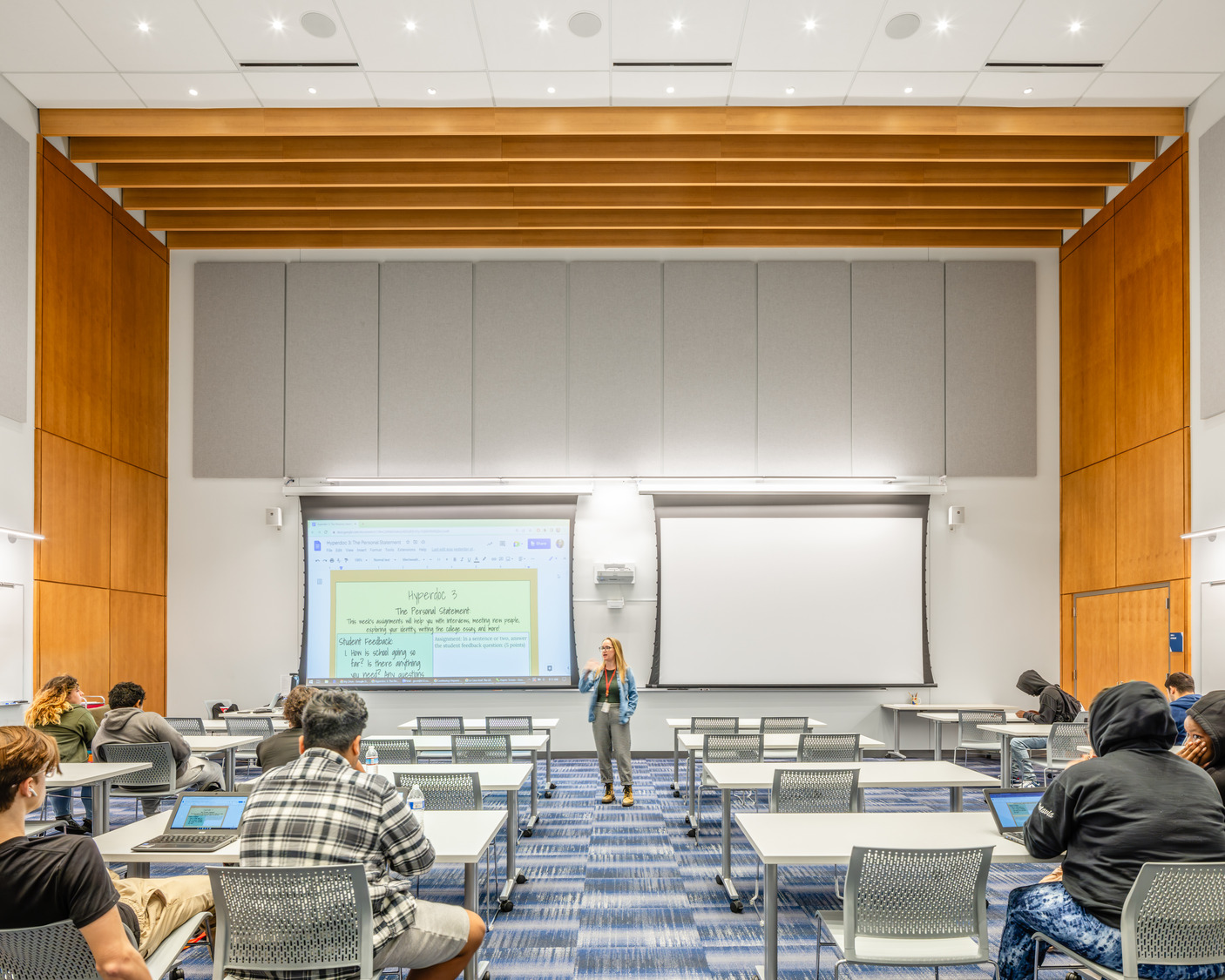
A large group instruction room is used for senate debates, visiting speakers, and more.
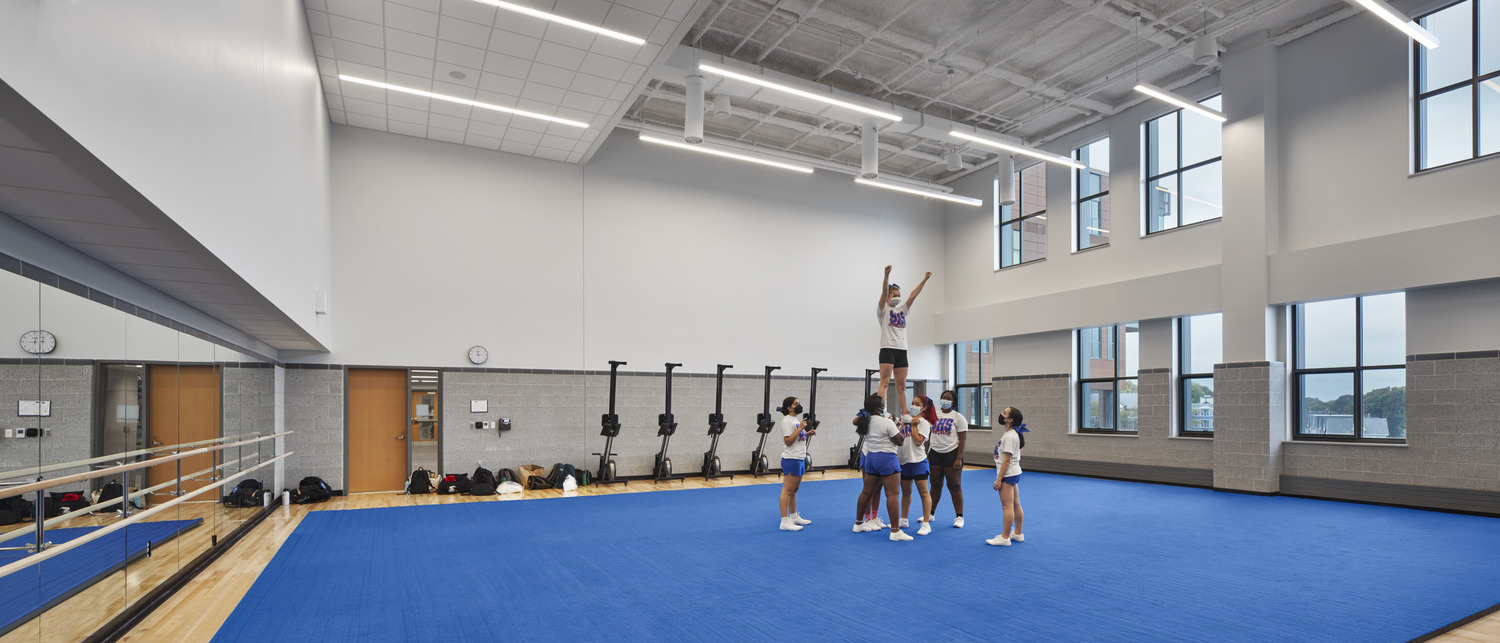
A multipurpose fitness room hosts dance, gymnastics, and other physical programs.

Outdoor Connections
In dense Somerville, access to the outdoors is important for student wellbeing. Somerville High School offers students and community members a variety of outdoor spaces to connect with nature in the city’s dense urban context.
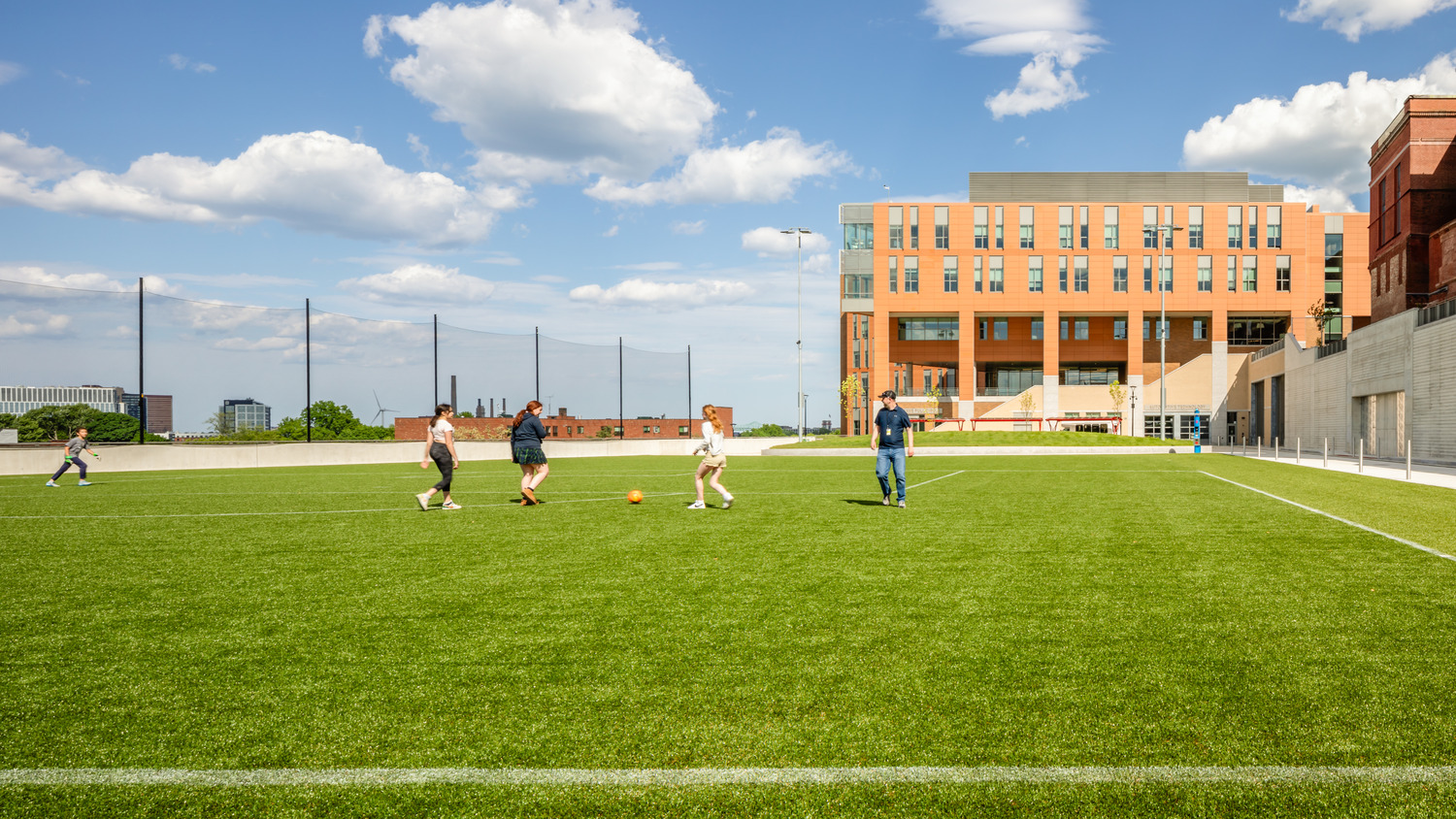
29.1%
Carbon Reduction
9.4 years
Payback
40.9
EUI
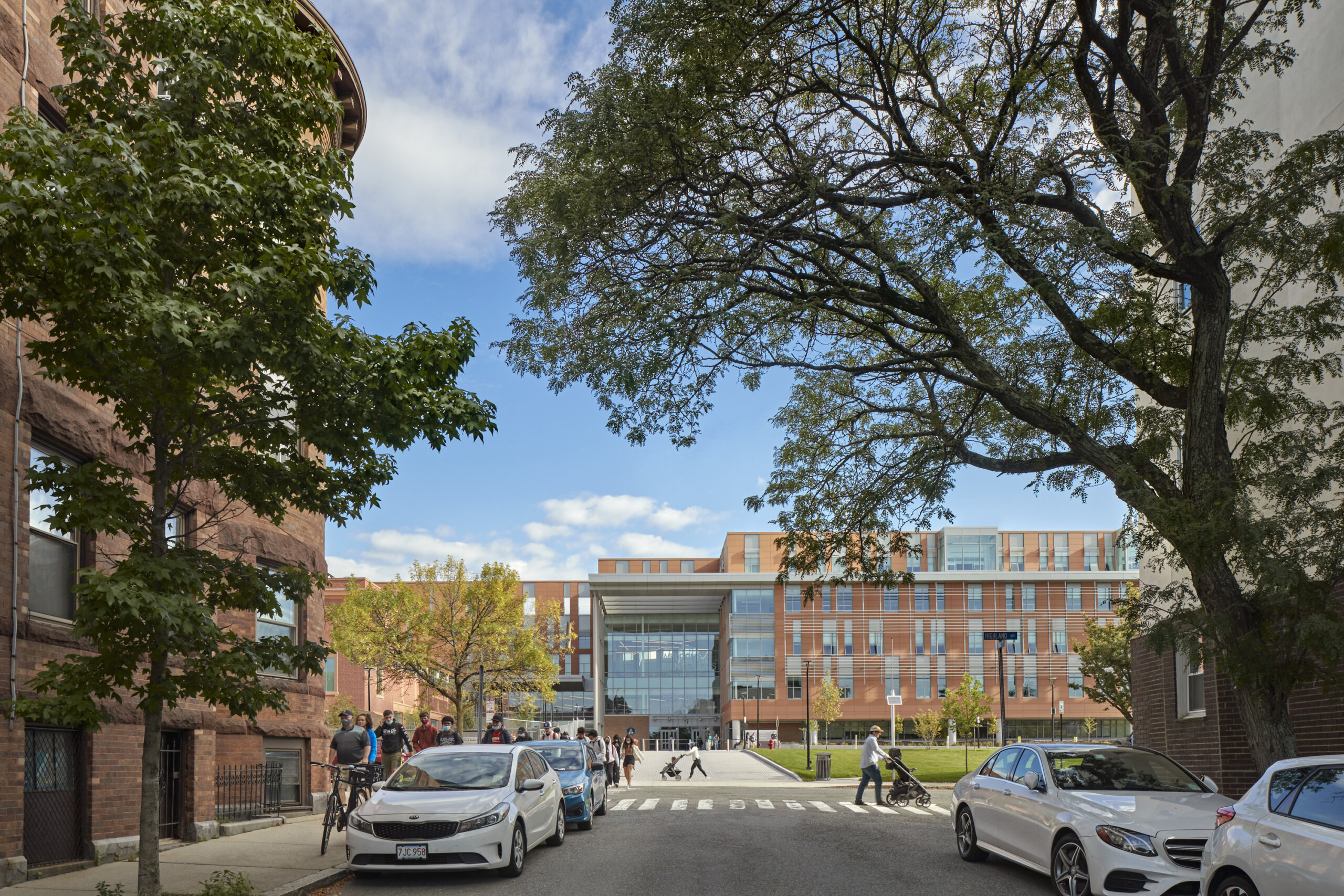
Pedestrians take priority
As requested by the city, SMMA’s master plan eliminated almost all onsite parking. The design offers improved circulation throughout the campus and quick access to public transport via bus and light rail. Bike storage is available to staff and students, while electric and battery-powered vehicles can use preferred parking with a charging station.
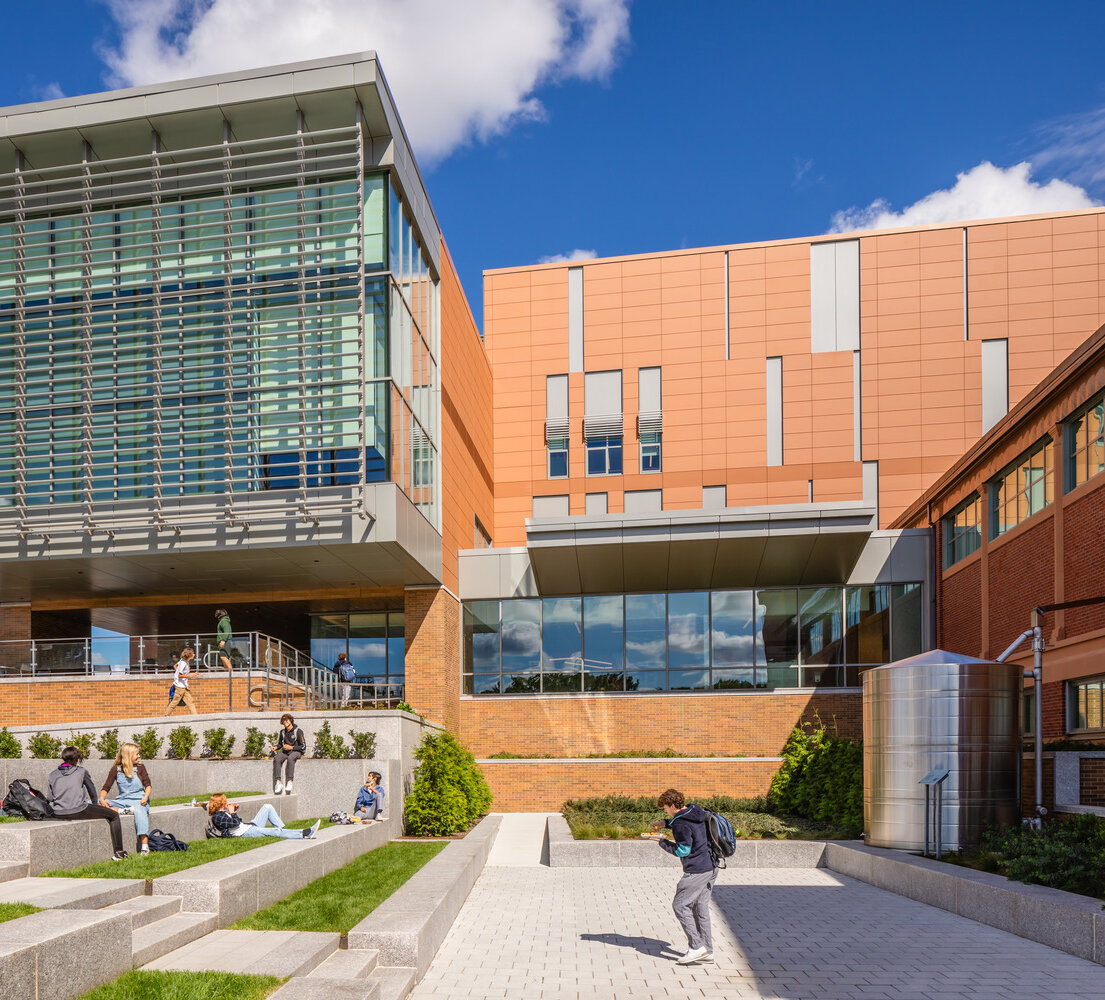
Porous pavements and rainwater harvesting tanks help meet the city’s ambitious stormwater capture and treatment goals.
